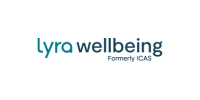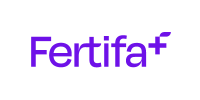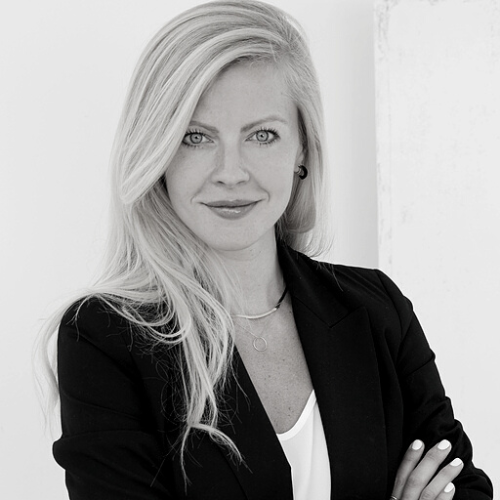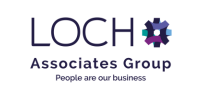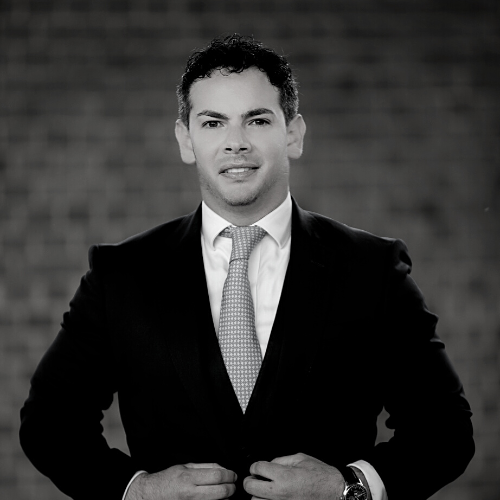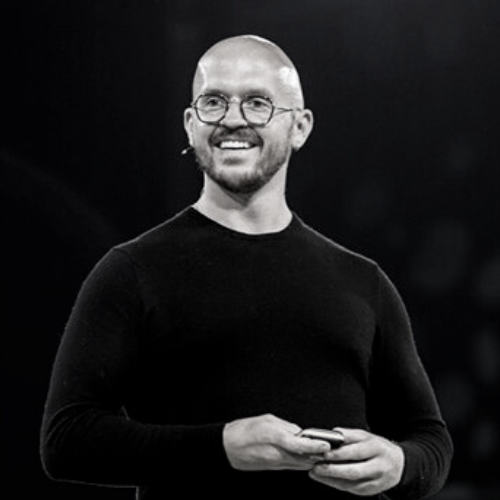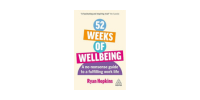Get your ticket for the leading Employee Health, Wellbeing, Benefits & Workplace Culture Event
Explore The Watercooler and unite with over 6000+ workplace experts spanning Wellbeing, HR, Culture, Employee Benefits, Learning & Development, DE&I, Mental Health, Occupational Health, Facilities Management, Health & Safety, Training, and Workspace Design.
2 DAYS of cutting-edge employee health, wellbeing, workplace culture, networking and product discovery. Co-located with The Office for the full 360 workplace experience.



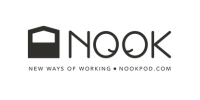


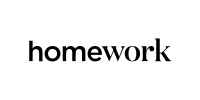
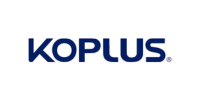


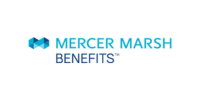



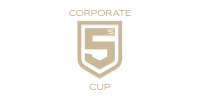
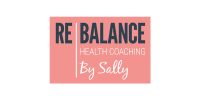

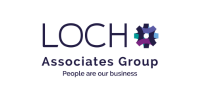
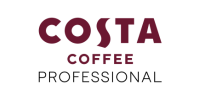


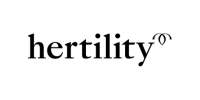

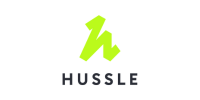

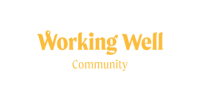



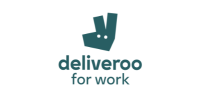

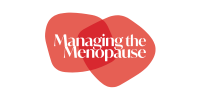
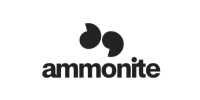
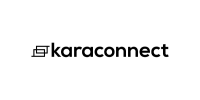


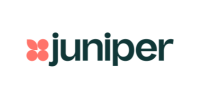


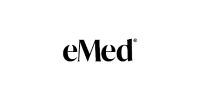

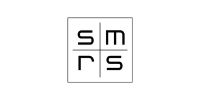


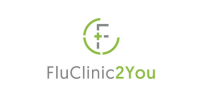
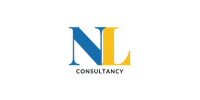






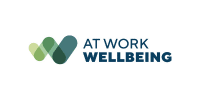


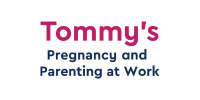
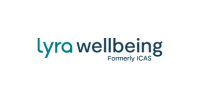
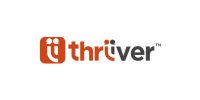

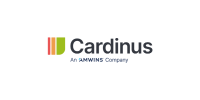


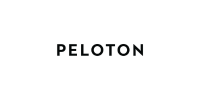

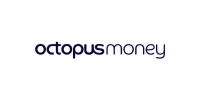









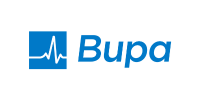




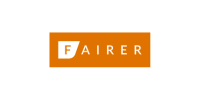







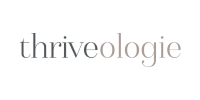








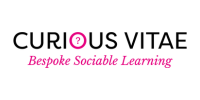
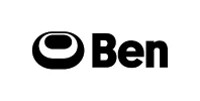
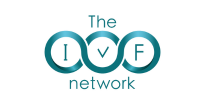
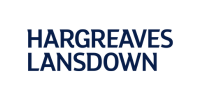



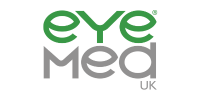

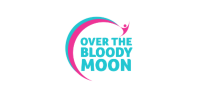

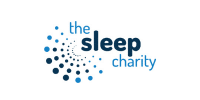


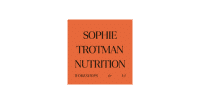



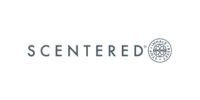


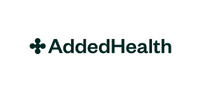
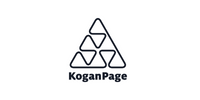


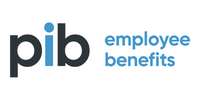
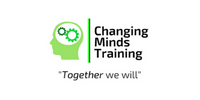
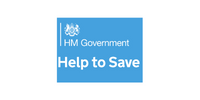
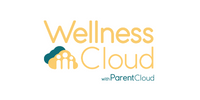
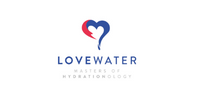
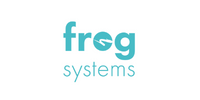































































































































































































































































Workplace Wellbeing & Employee Culture Leaders
As a critical issue on board agendas, The Watercooler is the hub for wellbeing and mental health leaders to gain immersive content and learn about new tools and solutions you won’t find anywhere else to shape your strategy and deliver results.
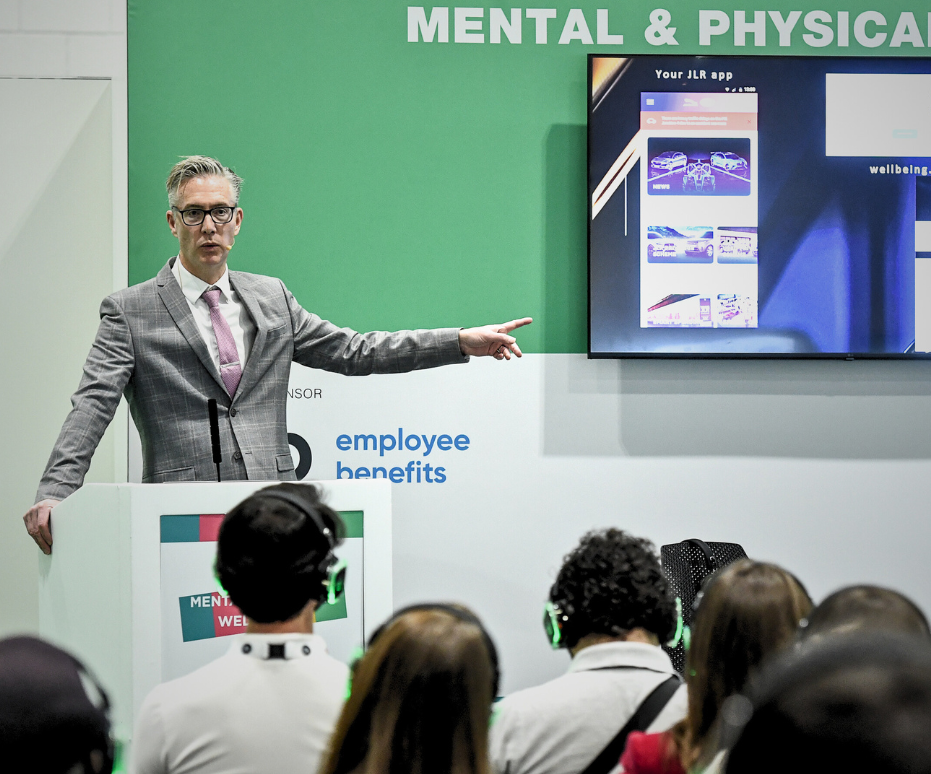
HR, DE&I, Leadership, Engagement, Diversity Specialists
Step into The Watercooler to join your peers to for 2-days of intensive knowledge learning and fast-track review of the latest tech to elevate your own workplace programmes. Take a seat at one of our main stages or check-in to our workshops around the show.
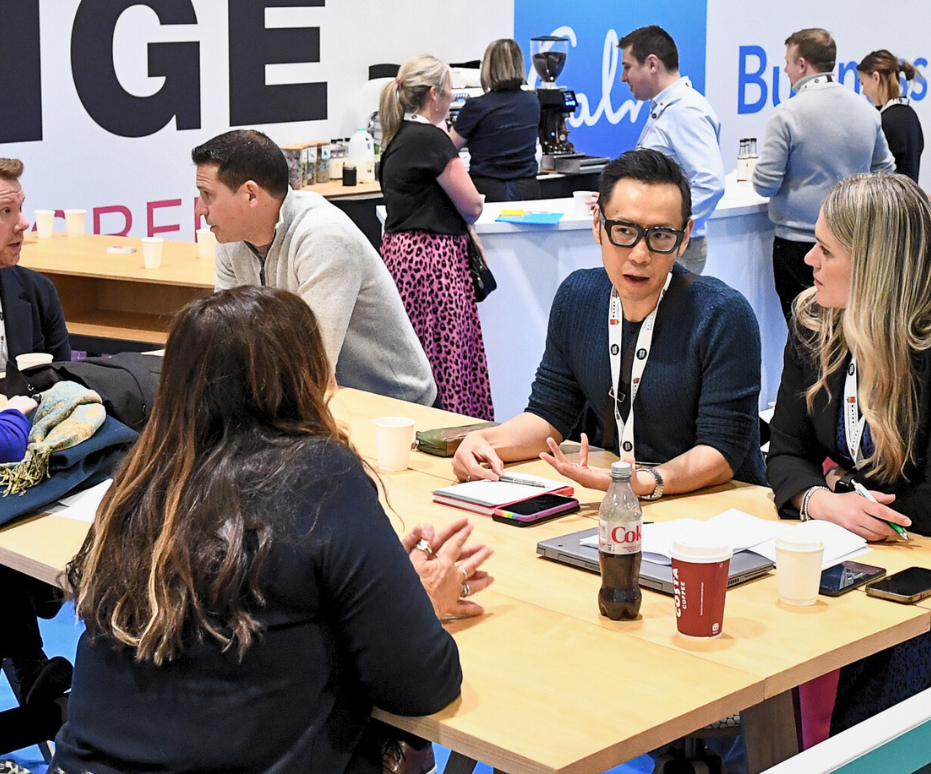
C-Level, Finance, Operations and Business Founders
Get your own insight on what is new in the workplace culture and employee wellbeing arena. Hear what other companies are doing at the conference and get a first-hand look at the newest and most popular tech that is driving successful wellbeing strategy in other organisations.

Solution and Technology Providers
If you have an innovative solution that’s helping businesses perform and execute better wellbeing strategy and workplace culture, it’s time to showcase them to your audience. The Watercooler provides the platform to build your brand and gain traction with the right decision makers.
Content Partners

Offical Wellbeing Design Partner

Offical Wellbeing Meeting Partner

What’s On
The Watercooler Conference and exhibition content focuses on the key pillars of wellbeing to enable you to build a comprehensive, holistic approach. As well as a series of focused workshops, the 2024 event will feature three parallel tracks running across both days of the event: Engage, Embed, Evolve. Now in its third year, the conference will run across both days of the event.
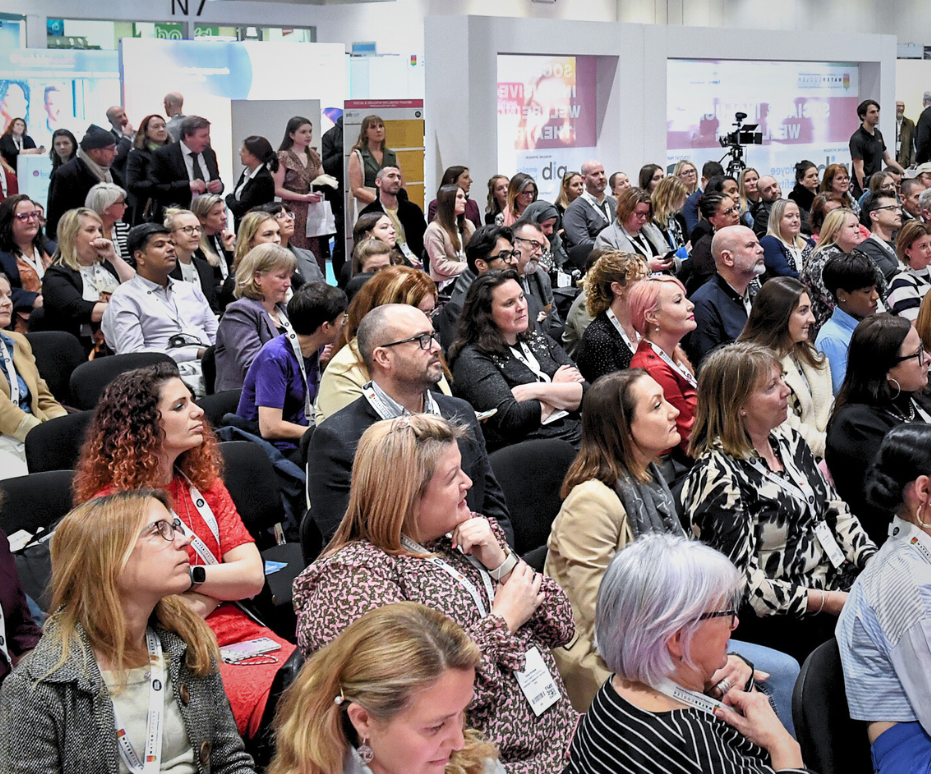
Conference
Three track conferences running side-by-side featuring thought-leading speakers and influencers, it’s held as a ‘silent disco’ format for focused and uninterrupted discussion.
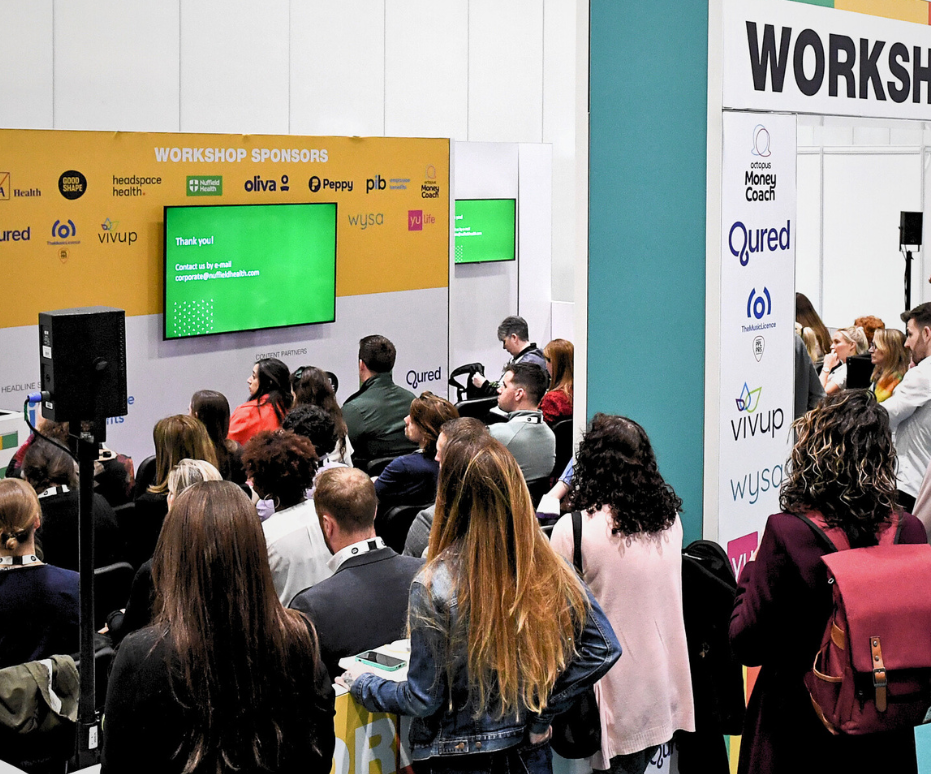
Workshops
Interactive workshop sessions held within the main exhibition hall, featuring deep-dive insight and solution partner case-studies and showcases.
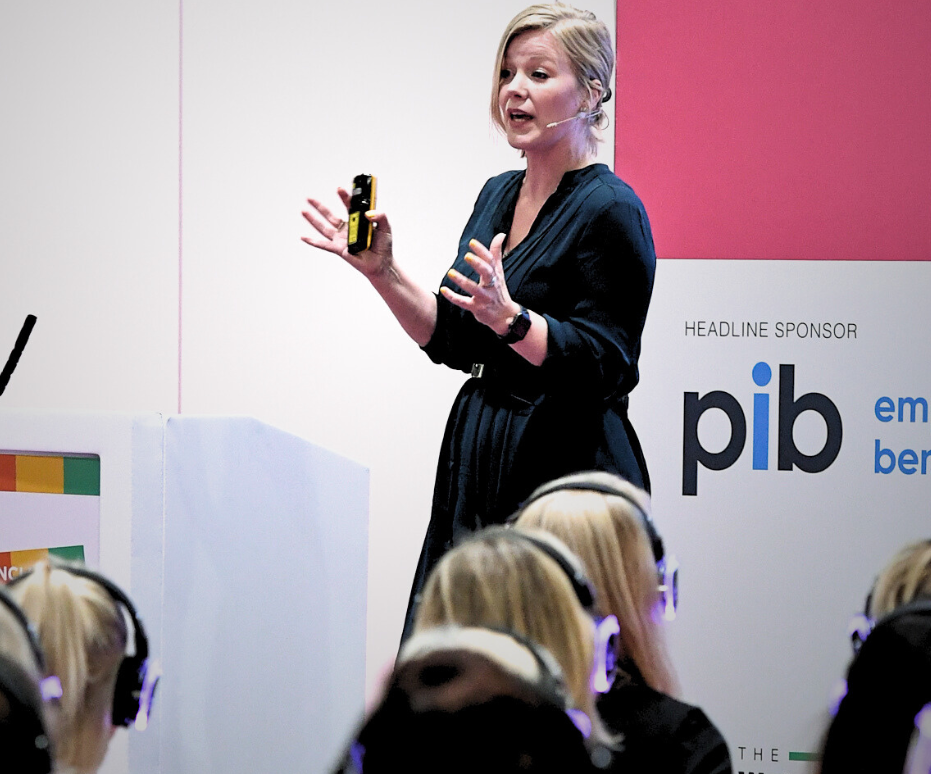
Keynote Sessions
Tune into our keynote presentations and fireside chats with Clarke & Carrie Carlisle, Dr. Nicola Millard @ BT Business, Chas Howes, former CFO Superdry and Isaac Harvey.

Exhibition
The Watercooler exhibition is filled with leading solution partners who are at the forefront of helping businesses deliver workplace culture and wellbeing programmes.
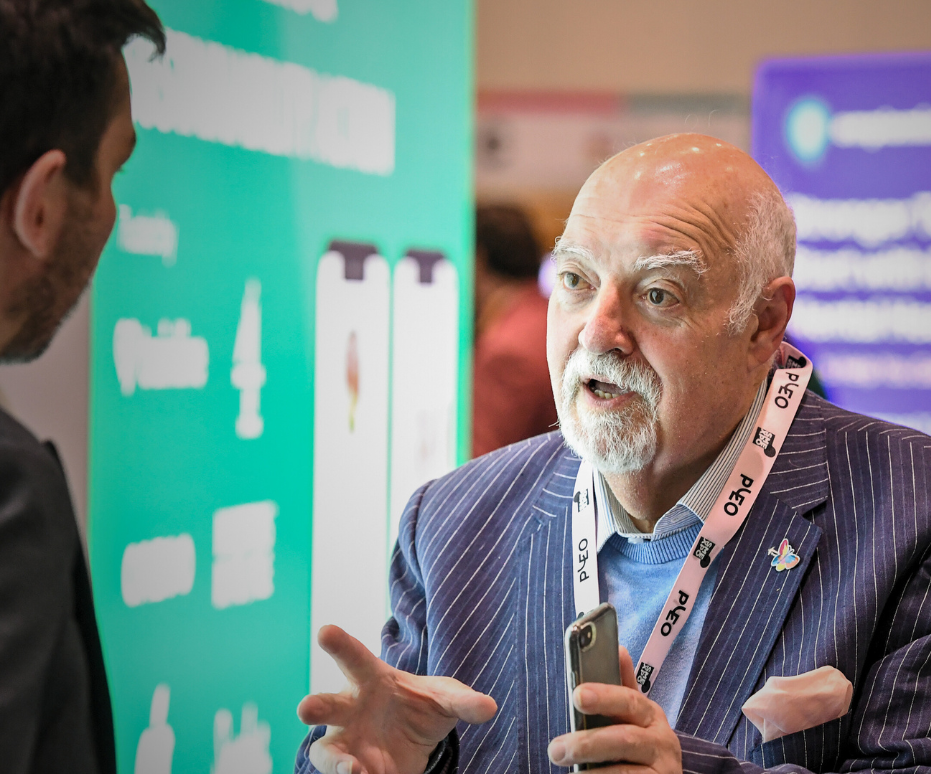
1-2-1 Meetings
Fast-track your supplier and technology partner search via our 1-2-1 meetings programme. Just indicate your interest on the registration form and we’ll do the rest!
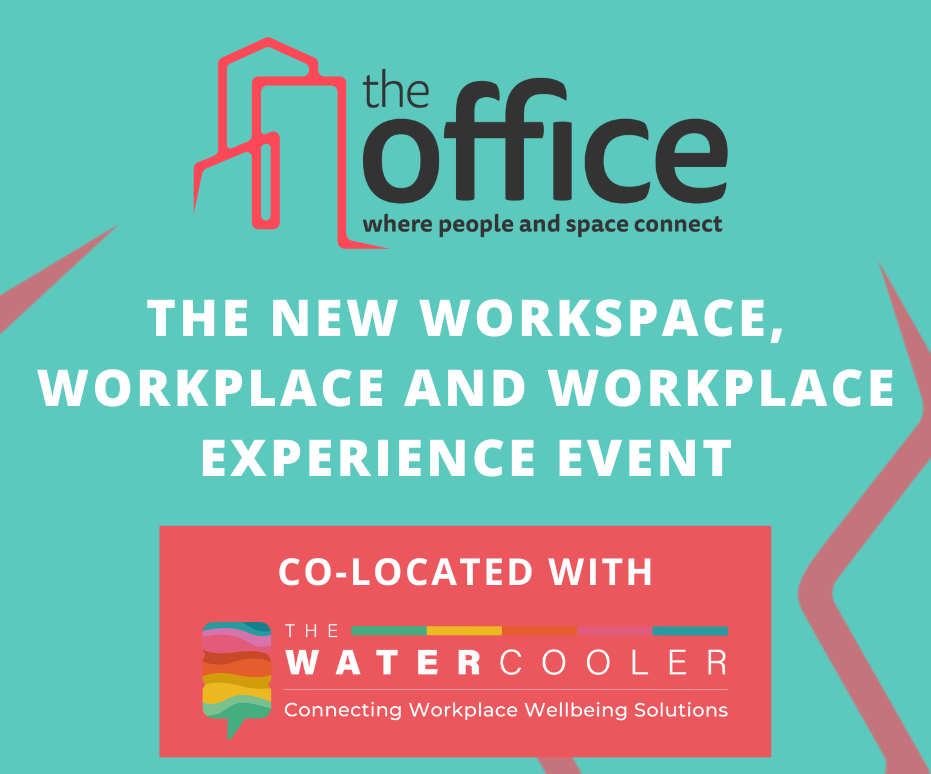
The Office
Get the full 360 Workspace and Workplace Experience at the gathering of workplace experts; Workspace Design, FM, Corporate Real Estate, Workplace Strategy and Property.
Latest Make A Difference News
One company that featured in The Sunday Times 2024 edition of the Best Places to Work, within the list of Best Medium Organisations for companies with between 50 and 249 members of staff is ecological consultancy Arbtech.
Employee satisfaction experts WorkL powered the survey, using the six factors of reward and recognition, instilling pride, information sharing, empowerment, wellbeing and job satisfaction as qualifying criteria.
These are the key points that set Arbtech apart.
Commitment to employee satisfaction and benefits
Specialising in surveys to support planning, Arbtech is headed by CEO Robert Oates, who has made it his mission to offer the fairest salaries, the most flexibility, and the best working environment, and make Arbtech the number one career destination in the ecology sector. He believes in the importance of putting employees first and providing them with generous benefits. This helps contribute to a happy workplace culture with low staff turnover and employees who are happy to go the extra mile for clients and each other.
Current perks of working for Arbtech include a 40-day holiday allowance, a subsidised gym membership, a free Fitbit, a selection of free subscriptions (Audible, Pret A Manger etc), an unlimited continued professional development (CPD) fund, and a ‘Cheers Mate’ scheme that enables employee-to-employee bonuses from individual wish lists any time someone goes out of their way to help another member of the team.
Innovative incentives and flexible work arrangements
Most recently, Arbtech started a ‘Paid As You Level Up’ scheme whereby employees receive a bonus for completing books from a reading list that will benefit them both personally and professionally. With surveyors situated all over the country, Arbtech also allows remote working and the ability for employees to arrange all-expenses-paid social events as an opportunity for staff to come together and reconnect in a relaxed setting.
Another recent addition to the list of company incentives has been the introduction of sabbaticals for long-term employees in exchange for a temporary salary deduction. It means that an Arbtecher with five, 10 or 15 years at the company will be entitled to a pre-arranged one, three or six-month period away from work respectively.
Employee testimonials reflect positive workplace culture
Arbtechers’ comments on their experience of working for the company include:
“I can’t believe how much training I’ve been lucky enough to receive over the last few years, even gaining a degree in arboriculture that Arbtech paid for.” – Nicole Gullan, Senior Ecologist
“Although most of us work from home, the daily support between the team and frequent all-paid socials massively brings us together.” – Olga Hermann, Ecological Surveyor
“From day one, you’re made to feel part of the team and are supported in everything you do or want to do.” – Chris Jarvis, Finance Administrator
“Given the exceptional socials on offer – including a recent skiing trip to Austria – you won’t go long before your colleagues become some of your closest friends.” – Emily Kempson, Senior Arboriculturist
Everyone puts in so much effort to help each other out, including rewarding one another through the ‘Cheers Mate’ scheme.” – Dean Meadows, Principal Arboriculturist
“The flexible workdays are truly flexible, and they allow me to fit work around my life instead of fitting my life around work” – Shaun Rowe, Graduate Arboriculturist
“Having worked in other consultancies, the biggest culture shock at Arbtech was the flat management structure, as it makes sharing knowledge and requesting help so accessible.” – Harley Stone, Consultant Ecologist
“Every employee is fully trusted to do their job without unnecessary micromanaging, but at the same time, help is always on hand for anyone who wants it.” – Andy Ward, Marketing Manager
The view from the top
Through nationwide coverage and specialisms in a multitude of areas, Arbtech offers tree surveys, ecology surveys, biodiversity net gain plans, numerous protected species surveys and an array of other services related to planning. On average, the team at Arbtech assists more than 8,000 projects every year and has so far supported over 50,000 projects since starting work in 2005.
Commenting on the main aims of Arbtech, Founder and CEO Robert Oates said: “At this company, employees come first. Every time. Ask the directors of the firm you work at currently, what’s at the heart of their business’ strategy and success, and they start talking about client relationships. What they should be talking about is employee relationships.”
Sources:
https://www.thetimes.co.uk/static/best-places-to-work-2024-medium/
https://engaging-works.s3.eu-west-2.amazonaws.com/awards/FAQs+Sunday+Times+-+2025+May.pdf
https://business.workl.co/workplace-awards/sunday-times-uk
You might also like:
Case study: Arbtech’s formula for a happy, remote working environment
In 2024, every company is acutely aware of the importance of workplace wellbeing – with everything from employment policies, staff benefits and company culture scrutinised to ensure the best possible staff experience is provided. But are we overlooking a key component of workplace wellbeing: the office
environment itself?
The missing piece of the puzzle?
We are living through a global health crisis. Autoimmune and chronic disease rates are higher than ever before, burnout is being worn like a badge of honour, and depression and anxiety are now alarmingly commonplace. Within this context, there has been a much-needed focus on workplace wellbeing offerings across companies of all sizes. But how much of an impact are these current programmes and benefits actually having on the day-to-day lives of the employees within these organisations?
From our perspective, there is one key part of the puzzle that is largely being overlooked that has a significant impact on workplace wellbeing: the physical environment within which the employees are working. How many companies have used a professional to design or review the impact of their office space on the staff’s health and wellbeing?
Misaligned messaging?
According to Perkbox, disengaged employees cost UK businesses £340 billion on average each year. The formula that most companies are now following to provide ‘support’ for their employees’ wellbeing often involves outsourcing to companies like Perkbox for reduced gym memberships, free coffees and discounts on shopping and cinema, alongside some private health insurance.
The next level is to bring specialists in like Nutritionists to provide expert advice to employees every once in a while, but how many companies are taking the design and management of the workplace itself seriously within the context of employee wellbeing?
How many nutrition talks are taking place in offices with sugary treats offered as the refreshments? How many burnout cases are happening within offices with unsustainable working hours and bright, sleep-disrupting lighting late into the evening? How many mental health claims are being made by those working in offices with poor access to daylight and no natural elements or planting? Hopefully you can begin to see what we are getting at here.
Better offices, better health
A survey by slack of 9,000 workers in six countries after the pandemic found that 72% prefer a hybrid remote-office model with only 12% preferring to always work in an office setting. This suggests that the physical environment of the office is not appealing to staff as much as it could be, indicating that there is more to be done to ensure that these spaces are actively benefiting employees’ mental and physical
health.
As a result of this, ostracising oneself within the comforting environment of your home can result in feelings of loneliness, blurred boundaries between work and personal hours, and a drop in motivation. Given that we now know from research published in PLOS Medicine that loneliness can affect health and longevity as much as smoking 15 cigarettes a day, we can see how employees slowly retreating to solo work from home may eventually lead to reduced performance and even health implications.
Can we afford not to provide healthy workplaces?
We know that the loss of just one staff member typically results in over £30,000 of costs for a business (Bright HR). And yet, when we look at how much a healthy building can reduce the chances of losing staff, one WELL-certified office saw a 27% drop in staff turnover and 50% drop in absenteeism (IWBI, 2018). Health-certified offices also show, on average, a 10% increase in median productivity scores alone.
However, health certifications are not the only route to a healthy workplace, and we fully appreciate that to many companies they can be offputting. As we always tell our clients, a bespoke approach to creating healthy buildings can be just as effective, provided you have the right team of experts on board to ensure that changes are genuinely impactful, and supported by robust evidence that they will truly have a positive effect on staff wellbeing.
With the best candidates now looking for companies that ‘provide it all’, we expect a high-quality workplace to be the next non-negotiable. This means workspaces that support productivity, creativity and collaborative work, that allow employees to socialise, and ultimately that boost their mental health, physical well-being, and even their longevity.
About the authors
Ekkist is a healthy buildings consultancy, founded with the goal of creating places that improve human health through their design, construction and operation. They advise on all aspects of creating healthier places, working across all use classes. Jade Leighton is the Head of Thought Leadership at Ekkist, having previously worked as a Health and Wellbeing Consultant for the company. Jade is also qualified in Nutritional Therapy and Lifestyle Medicine and has a strong interest in role that the physical environment plays in influencing human health.
Ben Channon is a Director at Ekkist as well as an architect, author, TEDx speaker, WELL AP and mental health advocate. Ben has written two books on the connection between design and mental health: Happy by Design and The Happy Design Toolkit. He previously advised the IWBI on the ‘Mind’ concept of the WELL Building Standard and is co-founder of the Architects’ Mental Wellbeing Forum.
You might also like:
Is your office design improving workplace wellbeing?
Listening can have a powerful, positive effect on wellbeing, as we explored in this article explaining why. But do you know how to listen well?
We put together some practical tips to help you cultivate this important skill.
1. Are you listening to listen and understand, or are you actually listening to form your own response?
Alexandra Efthymiades, Director, Consensio, which specialises in conflict management, suggests asking yourself the following questions:
- What am I paying attention to when listening?
- Am I paying attention to the speaker, or to myself, or something else?
- Can I be curious and interested in what the other person is saying?
- Can I put aside my thoughts and what I’m going to say next and focus on understanding where they are coming from?
2. If you don’t understand something, ask for clarification
A key part of active listening is reflecting back what you’ve just heard to check you have understood correctly.
A good way of doing this, says Efthymiades, is to preface your clarification with “what I’m hearing you say” or “if I’m understanding you correctly”.
“If you disagree with something that was said then explore with that person why they hold that opinion,” she advises.
One of the best ways to increase understanding and to show you are actively listening is to ask the speaker questions.
“Many misunderstandings are born because we assume a person means one thing when they mean another,” says Garry Douglas, Managing Director of GDA Online Training.
“If you have any uncertainty about what the person means, asking a clarifying question both clears up any misinterpretation AND shows you were listening to them carefully.
3. Pay attention to nonverbal cues
“These can ‘tell’ you just as much as the words someone is saying to you,” says Douglas.
He gives the example of a person speaking while hunched over, fiddling or looking down.
“These might be signs they are nervous or uncomfortable, so you can make an effort to adapt your communication with them in response. Perhaps, in this case, by smiling, speaking softly and aiming for ‘open’ body language,” he says.
Bear in mind that there are many experts that believe reading nonverbal cues is much harder via a screen and that listening is generally most effective in person.
4. Don’t interrupt
“I know this can be difficult when you have a point you want to make in response, but butting in is one of the easiest ways to make the speaker feel they are not being heard,” says Douglas.
He recommends taking brief notes as the other person speaks to ensure that you can respond to any points you need to when they have finished speaking.
5. Pay attention to how you feel when you are speaking
Carole Spiers, Chair of the International Stress Management Association (ISMA) UK, trains line managers in listening skills. She often starts with an exercise that illustrates the difference through roleplay between attentive listening, half-listening and switched-off listening.
“This exercise is so powerful because it allows participants to experience firsthand what it’s like not to be heard,” she says. “This creates a lasting impression and helps them understand the importance of genuine, attentive listening.”
Similarly, Julia Rogers, Professional Coach, Mentor Coach and Coach Supervisor, Coaching42, says she always encourages her students and coaches to watch other people talking, either in real life or on television and see if they think they are listening to each other, or just waiting to get their own point across.
“When people realise that this is what is happening a lot of the time they see that it can come across as dismissive and uninterested, and maybe a bit rude,” she says. “This can jolt people into taking more time to listen.”
6. Consider banning mobile phones from meetings and other group get-togethers at work
“There is no doubt we are addicted to our phones,” says Spiers. “They have become our lifeline, so we have to work extra hard at our human interaction of listening.”
Constant notifications are distracting and interrupt the flow of what someone is saying meaning if we are sporadically looking at our phones, we are not fully focusing on what someone is saying. Worse still, we are training our brains to proiritise surface-level rather than deep connection.
“The quick, superficial nature of digital communication often replaces deeper, more meaningful interactions, reducing the quality of our engagements,” says Spiers.
The instant-gratification nature of digital communications also leads, she says, to a lack of patience for the slower, more deliberate process of listening to someone.
“This impatience can severely impact our ability to truly understand and connect with others,” she says.
Rogers agrees, adding in her training sessions she talks about the importance of developing relationships at deeper levels so that the person you are talking to feels really heard: “If you can make people feel listened to they are more likely to feel respected, valued and included.”
While a mobile phone ban might seem extreme and will almost certainly provoke backlash from some, it will send the message to employees to “when you are in the room, be in the room” and boost presence and engagement.
7. Practice makes progress
“You can’t learn skills like active listening by just reading a book or learning a theory,” says Career Coach Tara Rule. “Practice is essential, which is why workshops and trainings need to have space for interaction and practice.”
8. Ask questions that encourage them to share more
During one training session, Rule introduced an exercise where participants had to keep asking their partner “what else?” in order to elicit more information, and make them feel truly heard.
Afterwards, one attendee told her:
“I was practicing only asking ‘What else?’ like we’d been instructed. I felt like we were going nowhere, when suddenly, after the seventh ‘what else?’ the other person stopped and said, ‘what a great question, and suddenly they unlocked something really deep’. It was so amazing to see how powerful it was to simply ask ‘what else?’ instead of giving my opinion.”
9. Reduce the amount of chatter around you
We have bandwidth for around 1.6 human conversations at a time, according to sound expert and keynote speaker Julian Treasure, who has done five TED Talks on the topic of listening/being heard and sound.
“Nobody can understand two people talking simultaneously and so if you’ve got somebody talking in an office, and you’re hearing them, it takes away ‘1’ of your 1.6 and leaves you less able to listen to the voice in your head (if you’re working alone) or the voice of the person talking to you,” he says.
This throws up interesting dilemmas about how to encourage listening at work, where often large open plan spaces are favoured today because they are seen as less hierarchical.
10. If you are trying to listen to yourself, then headphones with music may not be the best idea
One way people often get around being distracted by the words of others around them while they are working is to put on noise cancelling headphones and tune into some music. Treasure says this may not be working for productivity as well as they think:
“Music is mostly a very distracting sound. It’s meant to be listened to, so it’s designed to divert our attention. Lyrics make it much more distracting. But even listening to words without lyrics is distracting; after all, Beethoven designed his music to be listened to!”
So what does he advise listening to in order to best listen in to your own thoughts?
“If you want to put something on headphones when you’re working, then birdsong is ideal”, he says. “As nature’s alarm clock, it tends to make you more alert and most people feel reassured by birdsong because we’ve learned over thousands of years that when the birds are singing, things are normally OK, so the body relaxes.”
Because of this insight, some companies are now playing “biophilic sound” into offices: “Many, many people work in pretty sterile offices. So sound can be a very important aspect of biophilia. And it can be very productive, because it can reduce that zone of distraction and produce a much more healthy and productive work environment.”
11. Validate the person speaking
“Making people wrong, invalidating them, is at the root of just about all human conflict,” says Treasure. That’s why he thinks validation is one of the most important aspects of listening.
He suggests you can do it by saying something like ‘I don’t agree with you, but I can see that’s why you think that way’. This, as he says, is completely different from “making someone wrong” or making yourself right, “which is becoming addictive in the digital world”.
12. See everyone as an opportunity to learn, especially those who are different from you
One of Treasure’s favourite listening quotes is by former US President Barrack Obama. He said “I will listen to you, especially if we disagree”.
“Unfortunately we live in a world which is getting more and more polarised, and where opinions are confused with facts, where people are seeking out affirmation rather than challenge,” he says. “But it’s so powerful to have the humility to seek to learn from everybody you meet and that means really listening to them without judging and dismissing.”
Treasure trains employees on his listening courses to “listen for challenge”. Challenging ideas is very important, he says, to avoid having a “rigid” culture which “stamps on” creativity and innovation. That’s why the Court Jester was such a valuable character; because he often spoke truth to power.
The difficulty is when speaking to someone with different views – especially in a conflict situation – is that the emotion makes it harder to listen and not hyper focus on your view.
As conflict management expert Efthymiades says:
“You have to be very self aware to be a good listener. You need the ability to be present and to clear your mind, while also noticing if you are being triggered by something the other person is saying and notice how you want to respond to that. And, rather than responding, good listening is often about sitting with that discomfort. It’s hard. Especially as we become more polarised and less able to see nuance.”
13. Beware of your tendency to want to be right at the expense of relationships
“We need to be very conscious of that ego-driven desire to be right and make other people wrong,” says Treasure. “Humility is a really big factor in listening. Arrogant people don’t listen very well.”
Another of Treasure’s favourite listening quotes is from the Counsellor and Author Harville Hendricks who said: “Do you want to be right, or do you want to be in relationship?” Because you can’t always have both.”
You might also like:
13 Tips for improving the crucial skill of listening
Research released today by health and wellbeing intermediary Towergate Health & Protection shows that the majority of employers, 57%, stated that mental health is their greatest concern regarding their employees in light of hybrid working.
Summary of insights
When asked the question, “Which are you most concerned about for your employees in light of remote and hybrid working?” responses were as follows:
- 57% – Their mental health and wellbeing
- 49% – Their physical health and wellbeing
- 44% – Their financial health and wellbeing
- 44% – Their social wellbeing
Conducted by Opinium, on behalf of Towergate Health & Protection, among 500 HR professionals working for companies of all sizes across the UK in January 2024, the research also reveals that 60% of employers believe the importance of providing support for mental health has increased among their workforce.
Commenting on the research findings, David Williams, head of group risk for Towergate Health & Protection says: “Our research shows that the move to hybrid and remote working has had a big impact on the mental health of employees. While the taboo around mental health is dissipating, and the matter is moving up the corporate agenda, there is still more that can be done. Mental health support is vital in today’s working world and employers need to embrace the support available in order to keep their workforce healthy, happy, and productive.”
Accessing support available
Mental health issues and illnesses cover a wide spectrum, from low mood and stress to severe depression and debilitating anxiety, reaching crisis point. The underlying causes of poor mental health are equally widespread, including financial pressures, grief, work stress and physical ill-health.
There is a similarly wide array of ways for employers to provide mental health support. There are a multitude of options embedded within health and wellbeing benefits, and many employers may find that they already have support available – so it’s vital that they understand what there is and how best to access it.
Health and wellbeing benefits, such as group income protection insurance and private medical insurance, often encompass a wealth of support for mental health, this may include an employee assistance programme (EAP) or fast-track access to talking therapies or inpatient stays. They can also provide free apps and portals aimed at helping employees to understand and manage their own mental health. Support may also include helping to build resilience aimed at improving general mental health, as well as more specific assistance, such as grief counselling and addiction support.
David Williams comments: “Whether provided through existing health and wellbeing support or as a standalone option, mental health support needs to be made easily available to all employees. Good mental health is the crux of all health and wellbeing and the positives to supporting it cannot be understated.”
You might also like:
Remote and hybrid working mean mental health greatest employee concern for 57% of employers
Last week marked ‘World Listening Day’ (July 18th), but there are some experts who are worried that listening is becoming a “dying skill” and this is detrimentally affecting our collective wellbeing, especially in businesses.
Julian Treasure, listening consultant, is one such expert who has done five TED Talks on the topic including one entitled “5 Ways to listen better” and another “How to speak so people want to listen”. He regularly consults with companies on how to improve their listening, speaking and the effective use of sound.
Rise of social media
The seismic rise of “noisy” social media is partly to blame, he says, because “we are replacing a few deep relationships with lots of very shallow ones”:
“Social media causes huge distraction with companies spending billions to seize our attention as that’s their currency. And the thing is, as Scott Peck [psychiatrist and author] said ‘you cannot truly listen to anyone and do anything else at the same time’. How often do we, these days, put everything down and give someone our undivided attention? We’re always doing multiple things at once!”
The various research studies on listening support the theory that listening is getting worse, particularly in companies. Three out of four managers don’t listen well, according to research from Psychological Associates in 2021 and 66% of companies aren’t good listeners, finds the Tanner Institute’s 2020 Global Culture Report.
‘Listening is work’
Treasure’s definition of listening is “making meaning from sound”. Simple, right?
Well, no, actually.
“Listening is work,” he says. “It’s very different from hearing. We hear everything. We only listen to certain things, and then we make them mean something. It’s a mental practice.”
He suggests that one thing that could “change the world” would be if people realised one of the most important aspects of listening which is that “your listening is unique, so is mine”.
The thing is, often when we hear people speak we unconsciously put their words through internal filters in order to make meaning. But these filters are affected by our unique psychosocial make-ups, which are influenced by the culture we’re born into, the family we have, the experiences we’ve lived, the language we speak, role models we’ve seen, beliefs we’ve adopted, et cetera…
Everyone’s listening is different
“All these factors colour our listening,” says Treasure. “Every human being’s listening is as unique as their fingerprints and the mistake most people make is to assume everyone listens like they do. But they don’t.”
Assumptions then lead to misunderstandings about what is going on in others’ heads. This is especially true when tensions are running high because emotion can make it harder to listen, too.
In order to be good listeners, we need to be very conscious of our listening and, potentially, the filters we are applying to the meaning our brain is making from what it’s hearing. While Treasure calls this ‘conscious listening’, it’s also commonly referred to as ‘active listening’ which has become somewhat of a buzz word in recent years.
What is active listening?
But what does ‘active listening’ actually mean?
“It’s really about paying attention, so that we go beyond hearing words to intentionally listening to understand what people are saying,” says Alexandra Efthymiades, Co-founder and Director of Consensio, which specialises in conflict management.
“To do this, we need to be both self-aware and present in the moment. Active listening allows us to connect with people and understand what they mean and where they are coming from, even if we don’t agree with it. It can forge an emotional connection with someone, which allows people to feel heard and validated. It’s a difficult skill to learn, and very often, people think they are actively listening when they are not.”
The age of distraction
People often don’t pay attention to what others are saying because they are distracted by something else, such as writing an email, checking messages on their phones, or thinking about something that is preoccupying them. Or they listen, and then get distracted because they are triggered by what has been said, and then start thinking about how they can respond.
“We are able to actively listen when we are intentionally present, when we slow things down and clear our minds, when we are self-aware and able to ‘be’ with the other person,” she says.
Efthymiades believes that the reason why listening is getting worse is because of the fast pace of today’s business world, an over-reliance on using technology to communicate, and the fact that relationships therefore become “transactional”. It’s then about getting things done, rather than understanding where other people are coming from, how they see and feel about things, and what they need.
Too focused on productivity?
“If we are just focused on our to-do lists and being productive, then that often comes at a cost to our relationships,” says Efthymiades. “The cost is that we are not actively listening and so people don’t feel heard or valued, and we miss out on opportunities to make stronger relationships at work and adopt better ideas that are coming from people who think differently to us.”
It may sound counterintuitive, but slowing down and allowing time to actively listen to employees will save time and boost productivity in the long run. Efthymiades cites research that demonstrates the connection between empathic leaders and productivity.
“Empathy drives performance and part of that is listening to people and giving them a voice,” she says. “It’s such an important leadership skill, yet often managers are promoted based on their technical, and not necessarily people skills.” (See this feature on the emergence of two promotional streams in career ladders in order to recognise that not all technical experts will thrive in people management roles).
When ego gets in the way
Treasure has definitely witnessed this, as well as the ego-driven tendency for individuals, as they get higher in an organisation, to succumb to a “kind of pressure” to be someone who is supposed to “know and tell” people what to do:
“I think we need to be careful in organisations to promote people who are good listeners. But I wonder how many organisations have the question ‘is s/he a good listener?’ In their 360 degree reviews. The idea of a quiet, introverted, listening leader is often seen as weak, but some of the greatest leaders have been quiet and good listeners. Just think of Ghandi and how much loyalty he quietly inspired!”
Another aspect of listening that is fundamental to being effective is validating the person who is speaking. This is where you acknowledge the other person’s perspective and say you can see why they hold the opinion that they do.
The power of validation
“This is completely different from making someone wrong,” says Treasure. “Making people wrong, invalidating them, is at the root of just about all human conflict. Unfortunately, we live in a world where there’s a great deal of being right and making others wrong, exacerbated by social media which polarises opinions on purpose.”
But businesses are missing a trick here because it’s at the collision of opposing ideas where creativity and innovation are often born. Imagine, says Treasure, a business which said: ‘OK, you think X and I think Y… how can we put these two together to solve this problem?’
For this reason, Treasure encourages people in his keynotes and workshops to lean in to challenge and people with different views from you.
Listening vs Hearing
Listening and hearing difference is particularly important if your role in any way touches on DEI. Relationships, and validating people’s feelings, are crucial to her role as Global Lead – Diversity, Equity and Inclusion at Ebay, says Estelle Jackson:
“I could go to bed every night thinking I’m only one person and I can’t fix any of this but, actually, in my job relationship-building is everything and that’s about being able to actively listen to others.”
For her, the hardest thing to learn and practice has been “sensitive curiosity” in response to what someone has just told her. She’s learnt she has to use this skill to work out the reason someone is sharing with her: is it to vent and they don’t actually want her opinion? Is it because they want advice? Are they looking for a practical solution? Or do they just want her to agree with what they’re saying?
Curious sensitivity
In order to be curiously sensitive, she often uses gentle questions which put the ball back into the sharer’s court and get them to think through the situation themselves, like: how do you think you could have done that differently?
Feeling listened to and validated are at the heart of good mental health. In fact, certain mental illnesses like Borderline Personality Disorder are widely attributed to a lack of emotional validation in childhood.
Listening is directly linked to wellbeing
Carole Spiers, Chair of the International Stress Management Association (ISMA) UK, was a Samaritan for over 20 years, so has experienced firsthand how listening can save a life.
“It is humbling to know that simply listening to someone can help them emerge from the depths of despair and darkness,” she says. “Employees can be trained to listen if an employer prioritises it. As technology increasingly takes over our lives, we must ensure we don’t lose sight of this fundamental skill.”
You might also like:
Why listening is directly linked to Wellbeing & why we must not lose this skill in a sea of screens
Employee engagement specialist, WorkBuzz, and Personal Group Holdings have formed a partnership to tackle the deskless workforce’s lack of voice and influence. Deskless workers – from retail associates and restaurant workers through to healthcare professionals and construction workers – often feel isolated and voiceless, made worse by sub-standard technology. 60% are unsatisfied with the technology they’re provided with to do their job and only about 1% of software venture funding is aimed at deskless workers.
Innovative solutions for engagement and feedback
The collaboration between WorkBuzz, and workforce benefits and services provider, Personal Group, has brought together HR technology and engagement specialists for the purpose of creating new, easy-to-use and accessible ways for deskless workers to get their voices heard. The aim is to close the technology gap, amplifying the voices of deskless workers – including the hourly and weekly paid – so they can easily feedback to their employer, and key insights captured and quickly acted upon.
Integration with the Hapi App
As part of the partnership, WorkBuzz’s employee engagement surveys will now be accessible from Personal Group’s Hapi app – an employee benefits platform available on both desktop and smartphone. As well as deskless workers being able to access Hapi’s communications, benefits, wellbeing, and recognition functionality from their smartphones, they will now be able to launch WorkBuzz’s engagement surveys directly from the platform, providing a simple and anonymous means to provide feedback to their employer.
Addressing the challenges faced by deskless workers
Karen Thornley, Chief Product and Partnerships Officer from Personal Group says, “Despite their significant presence, deskless workers are faced with unique challenges that can impact their engagement and wellbeing. They all too often feel disconnected and sidelined, with depression rates 61% higher than those of desk-based workers. One of the reasons is that they lack a voice, not feeling empowered to influence change. With WorkBuzz’s employee listening technology now easily accessible from Hapi, deskless workers have an effective means by which to give their opinions and ideas, ensuring they feel listened to and valued.”
Enhancing employee experience and business outcomes
Commenting on the partnership, Steven Frost, CEO of WorkBuzz said: “Organisations can’t afford to ignore their deskless workers but must ensure they feel considered and appreciated as this improves retention, reduces absence rates and increases productivity. Our partnership with Personal Group is the perfect alliance, bringing together HR tech and engagement specialists in order to extend the reach of our surveys, while providing deskless workers with a richer employee experience.”
WorkBuzz’s engagement surveys range from pulse surveys that are used to better understand employee sentiment at a certain point in time, through to onboarding, exit and annual surveys. Employers can then work with WorkBuzz to dissect and interpret the survey findings and create meaningful action plans to improve a range of business outcomes, from retention rates and engagement levels through to performance and profitability.
You might also like:
WorkBuzz and Personal Group join forces to reach more deskless workers
PPL are the UK licensing company for recorded music (their joint venture company PPL PRS are also sponsors of The Office section of www.makeadifference.media). Representing over 140,000 performers and recording rightsholders, PPL’s new workplace of in the heart of Soho, designed and built by Peldon Rose spans 10,000 sq ft of creative office interior design.
With a focus on providing a welcome workspace to inspire, with agile and collaborative spaces for employees – alongside musical design details that nod to the music industry – the workplace is both functional and charming and the perfect place to continue to drive PPL’s success. Build time was 18 weeks.
Agile spaces and acoustic considerations
Floors three and four make up PPL’s working floors, where employees will spend the majority of their working day. To accommodate the diverse needs and preferences of individuals, the floors are characterised by different areas for private, focused, or collaborative work. Carefully selected fabrics and the use of furniture such as focus booths and high touch down tables operate as permeable dividers to harmonise energy levels and optimise acoustics between different zones. This was an important part of the brief.
Breakout areas have comfortable sofas facing large white-boards inset into acoustic glass dividers, allowing ad-hoc creativity to flow. A “collaboration spine” runs through the centre of the floorplate – a linear collection of agile and cooperative working spaces for open meetings.
The area is given character with punchy modulus flooring and mint-green painted joinery ceilings and partitions. Soft upholstery and special acoustic dividers which absorb sound five times more than standard sheer curtain fabric all help integrate this higher-energy zone into an office that still proves productive and functional.
Circling the collaboration spine is a belt of oak vinyl and fixed open-plan desking, placed perpendicular to windows to maximise exposure to natural light. Visual cues that resonate with PPL’s identity are visible, with soundbars printed on walls, and other musical motifs featured throughout the space.
Adaptable office interior design
A large canteen area on the fifth floor enables the company to come together to socialise, rest, collaborate, and soak up the benefits of the many windows that line the floor’s periphery, flooding the space with natural light.
The use of biophilia, raw materials, and a neutral colour scheme accented with pops of colour from canteen chairs, feeds into a playful yet relaxed atmosphere. PPL’s office is inclusive and accessible throughout, including in the kitchen with a new ramp and sinks installed with space for a wheelchair to pull up underneath.
Adjacent to the canteen area is the company boardroom. Notable for its leaf-printed wallpaper and its glass folding walls, the room has the ability to open into the canteen area to create one large space for all-company meetings, seminars or events. Foldable and moveable furniture means the space can flex day to day to fit the needs of the company.
Sustainability accomplishments
Peldon Rose were tasked to reuse existing features and furnishings where possible in line with an environmentally conscious design approach. To this end, the internal doors have been vinyl wrapped in a sophisticated black, much of the existing furniture has been reupholstered, and the old desking kept. This is a cost-effect design approach. Material procurement followed a similar mindset, with products carefully selected, starting from the way their raw materials are extracted, to manufacturing, transportation, and end of life.
PPL now enjoy a working space that is welcoming to employees and optimised to accommodate different styles of working and work tasks.
About the author
Alice Bamber is Marketing and Communications Executive with Peldon Rose – a leading London provider of office design and build expertise. Its team of workplace strategists and specialists create workplaces that deliver business value, while providing exceptional everyday experiences for the people who use them. Through a bespoke end-to-end service, Peldon Rose rapidly gains an understanding of business needs, and then designs and delivers industry-leading solutions. Throughout the process, the team provide a consistently uplifting experience for clients and their people. They achieve this by sparking joy, enabling purpose, inspiring belief and building connections through the spaces and relationships created every day.
You might also like:
Case study: A workplace tuned in to diverse needs and individual preferences
Building on the success of last year’s DE&I Symposium, which demonstrated the powerful connection between DE&I and wellbeing, at this year’s MAD World we’re bringing together leaders to foster the collaboration that’s needed to create inclusive workplaces where all employees can thrive.

One of the most hotly anticipated sessions of this DE&I stream this year is the ‘fireside chat’ with ebay’s Senior Manager, Global Diversity, Equity and Inclusion, Estelle Jackson, about creating and celebrating neuroinclusion. With approximately 15% of the UK population being neurodivergent, not enough employers are embracing neurodiversity and therefore not reaping the rewards from doing so.
This chat will be faciliated by the Bipolar Businessman, Thomas Duncan Bell, and cover themes such as challenges neurodiverse individuals face and fostering strategies which embrace neuroinclusion.
We caught up with Estelle ahead of her appearance at MAD World about all things DE&I.
What is your remit?
If I wrote my job description, it would be very long, but in a nutshell, my job at ebay is to make sure that everyone has a voice that is heard and valued. That can mean many things, including education on all things Diversity, Equity and Inclusion (DEI), creating action plans to track progress on DEI topics, working with our Communities of Inclusion (COIs) (which other companies might call Employee Resource Groups) and helping drive measurable impact.
My role is global, so I’m lucky enough to work with lots of different countries. As you can imagine, no two days are the same! It’s the best part of my job. I love hearing about what’s happening around the world and see how diverse our cultures are in all of our sites. I work in a team of six, spread across the globe.
Can you give me an example of a global task you might do?
My job is to pick up on biases, be mindful of cultural sensitivity and ensure that communications are understandable across our sites globally. This sometimes means I’ve had to rewrite scripts so they are more culturally aware.
This morning, I was asked to consult on a video that the Learning & Development team has put together. I reviewed it from a cultural sensitivity lens to make sure that the words, tone, and body language would make sense around the world, which was a great start to my day.
Then I did some data review on one of our global sites to help them start to think about their DEI action planning, which involves setting goals to drive positive change in their organisations.
And then I wrote a workshop on the Impact of Allyship to deliver to employees across the globe around the 7 types of allies, how to show up in the spirit of allyship, and facts about what allyship is and is not.
In short, I work to make sure that we implement global awareness with a local lens.
How important is data and how do you use it?
Very important. A lot of the work I do is gathering data and using it to tell a story.
We’ve just rolled out a project called Self-ID. It’s a voluntary disclosure program that allows employees to share their demographic information in a secure platform. Self-ID empowers employees to share their identity on their terms. Its aggregated data will help support the employee experience and identify gaps and opportunities to build a stronger sense of belonging.
What kinds of insights or feedback have you got from employees?
One of the first things I heard from employees in our United in PRIDE COI last year was our trans community saying they felt overlooked.
As a result of their input, I led the creation of our Gender Expression and Identity Standard, which is a global way of standardising support. It includes practical guidance for managers and colleagues who want to support people going through gender transition, shares how trans or gender-nonconforming employees can do things like update the gender on their ID, and includes benefits information. This has become a powerful way of demonstrating our commitment to inclusion. It’s not just about supporting events during Pride season but having systemic process and policy change to practically demonstrate our commitment to inclusion. It’s year-round, and it’s for all employees.
You’re talking about neurodivergence at MAD World. Can you tell me any insights you have had about your neurodivergent community?
In previous surveys, neurodivergent colleagues were saying things like ‘I don’t feel like I can talk to my manager about the fact I have ADHD. I mask and hide it.’
Or ‘I struggle to concentrate in a loud work environment, and now that we’re returning to the office in a post-Covid world, it’s affecting my work and mental health’. Or ‘I want to record meetings because I’ve got ADHD and want to be able to confirm I’ve got all the relevant information, but my manager doesn’t feel comfortable recording meetings.’
Then you’ve got people that disclose in the survey, but are masking their neurodivergence in front of colleagues. There are a lot of challenges neurodivergent employees can experience.
What have you done on the back of your insights to improve work/life for neurodivergent colleagues?
I’m currently creating a Global Neurodivergence Standard that should be in place by the end of the year to help people understand the different types of neurodivergence, how to best support or manage neurodivergent employees, and what employee benefits are relevant to them.
People are becoming more comfortable talking about neurodivergence; we’re seeing probably a 10% increase each month in the number of employees joining our ‘Minds of All Kinds’ Slack channel and asking more questions about how to support colleagues, friends and family who are part of the neurodivergent community.
One thing we’ve already improved is our benefits package for getting a neurodevelopmental assessment in the UK. Many companies don’t cover neurodivergent benefits at all, so we were doing better than that, but there was a long wait for care, you had to pay for the benefit and wait to be reimbursed, and it was just stressful. I know, because I had to take my 16-year-old daughter through the process.
As a result, I went to our benefits department and asked how I could help them improve this for our employees. We’ve now reviewed our policy, made sure people don’t need to pay anything themselves, included medication in the benefit, and made the process easier.
Tell me more about neurodivergence and the office…
I was involved in the project team in the UK looking at site logistics. We have got a number of neurodivergent people who are very vocal about how they feel coming back to the office post COVID.
They are on a busy office floor, where there’s loud music, people shouting and phones ringing and they tell us they can’t get any work done and, consequently, are burning out. Conversely, at home they are hyper focused and can be extremely productive.
So, I’ve said that if we’re going to encourage our teammates back to the office, we need to think about how we set these offices up for different needs. For example, we may need to create ‘focus areas’ where people can go where there is no noise, no phones, no music – no distractions. Then we need creativity zones where there is music, people can collaborate and talk, use their phones, get energy out with a ping pong table. We’re trying to make this approach global.
But we also have to recognise that even that may not work for some of our neurodivergent employees. In those exceptional cases, we need policies and procedures around exemptions. Now, via our People teams globally, a person can be exempt from the return-to-office rule because they have a medical condition and need to be able to focus at home.
You sound passionate about neurodivergence. Where does that come from?
Both my daughters are neurodivergent, so is my partner, and my brother has epilepsy. I am surrounded by a world of neurodivergence, and I’m passionate about valuing uniqueness and individuality.
You mentioned working closely with your benefits department. To what extent do you think benefits can influence culture?
Massively. There are a couple of initiatives I’ve worked with the benefits team to roll out and I’m always asking them questions. Having a great partner in your HR, benefits, legal and facilities teams hugely benefits the work you can achieve and the changes you can achieve in an organisation.
What are the characteristics that you need to thrive in your job?
You have to be stubborn! Empathetic. Goal driven. Motivated. And have sensitive curiosity.
I’m not afraid to ask difficult questions and I’m prepared for difficult answers, and I’m OK with being uncomfortable a lot of the time. In this job, you’re going to hear examples of where things are not going right. But you have the opportunity to fix things, which is amazing.
In the spirit of sensitive curiosity, I often ask questions like: ‘how could you have done that differently?’ I want to encourage that person to think about it so next time they’re in a situation they can respond differently.
That sounds like coaching. Would you say coaching is part of your job?
Yes. It’s not officially in my job description but, especially our senior leaders, will come to me and say ‘I’ve got this situation, can we talk it through?’ which is great! To be a true partner to the business and have people come to me for advice and coaching shows the impact DEI has in our business and the work leaders are willing to put in to getting out of their comfort zones.
Education is a huge part of my role and letting people know its ok to change your mind. We’re not always going to agree, but open your mind up to different perspectives, learn how to play devil’s advocate and encourage people to bring their authentically amazing selves to the workplace.
The DE&I Summit at MAD World is an event driving excellence in building equitable, inclusive, thriving workplaces. As well as Ebay’s Jackson, speakers include Pernille Hagild, Global Equality, Diversity and Inclusion Lead, IKEA, Dr Patrick Ismon, Head of EDI, RSPCA and Sharlene John, Head of DEI, Recruitment & Onboarding, Selfridges.
MAD World is on 17th October 2024, and will bring together speakers and attendees from across sectors and with a range of job titles for five tracks of leading-edge content that showcase best practice and provide insights and inspiration for all those looking to achieve maximum engagement with initiatives, optimise investment, stay one step ahead and really make a difference.
The stellar lineup of speakers includes: Professor Dame Carol Black GBE FRCP FMed Sci; Peter Cheese, CEO, CIPD, Vanessa Harwood-Whitcher, Chief Executive, The Institute of Occupational Safety & Health (IOSH), Dhavani Bishop, Head of Group Colleague Health & Wellbeing, Tesco, Kirstin Furber, People Director, Channel 4, Dr Clare Fernandes, Chief Medical Officer, BBC, Christian van Stolk, Executive Vice President, RAND Europe, Andrew Gibbons, Group Head of Wellbeing, Recognition and Hybrid Working, HSBC, Karen Brookes, Chief People Officer, Sir Robert McAlpine, Jaimy Fairclough, Wellbeing Specialist – People Division, Sainsbury’s, Dr Femi Oduneye, Vice President Health, Shell International B.V. and many more. You can find out more and register to attend here.
You might also like:
ebay: “we’re seeing a 10% monthly increase in employees joining our ‘Minds Of All Kinds’ neuroinclusion Slack channel”
In May this year, British Safety Council (BSC) commissioned YouGov to undertake two research projects. The goal of this research was to capture the views of employers and employees around technology and the future of work, with particular regard to people’s jobs and safety.
To capture attitudes towards artificial intelligence (AI), augmented reality (AR), and virtual reality (VR) in the context of workplace safety, 2006 respondents in employers were surveyed and 2012 employee respondents.
AI, the future of work and its impact on workplace culture, employee health and wellbeing were hot topics at our sister event The Watercooler in April and it’s an issue we’ll be revisiting at the Leaders’ Summit at MAD World too.
Topline findings
- 63% of 2000 employers and 41% of 2000 employees report optimism about the impacts of AI on their workforce and workplace respectively.
- Over a quarter (26%) of employers and employees alike reported a belief that AI would make the workplace less safe over the next decade.
- 26% of employers also believe that AI could make workplaces safer, a belief shared by only 13% of employees.
- 48% of employers feel optimism about the impacts of augmented reality (AR) on their workforce and 33% of workers report optimism about the impacts of AR on their workplace.
- When asked what proportion of workers would be replaced, by AI, over the next decade, 20% of employers foresaw that less than 10% of their workforce would be replaced by 2034.
- 6% of employers foresaw that over 50% of their workforce could be replaced by 2034 and 19% of employers foresaw no role replacement, at all, by 2034.
Differing opinions
Responses reflect differing degrees of uncertainty about what the future will hold and what role technology will play in shaping the safe workplaces of the future. Whilst the findings support a general optimism around the role that technology will play in improving workplace safety, clear concerns about role replacement and whether new and developing technologies will contribute to safer or less safe workplaces are clear throughout the dataset (and from both audiences).
Attitudes towards AI
Both the employer and the employee panels report similar findings around the possible impacts of AI on the workplace/workforce respectively. 26% of both audiences report that AI could make workplaces less safe. 26% of employers report that AI could make the workplace safer, and this is compared against 13% of employees reporting optimism around AI and workplace safety.
While the collected data is unable to explain the reason/s for this divergence, wider inferences can be drawn around the impacts of role replacement and the prevalence of public and media discourse around AI, which leans heavily towards extreme scenarios (e.g., mass job displacement due to AI) rather than a more nuanced view of the future.
Objectively speaking, employees are more likely to be impacted by role replacement and this may contribute to the greater presentation of negative views reported in the dataset. As employers are less likely to be replaced by new and developing technologies (certainly within the parameters of the question) employers may be able to take a more nuanced and balanced view that weighs risk alongside anticipated reward.
Change
Employers are more likely to be drivers of change, rather than passive actors and are more likely to display a greater awareness of the pace and impacts of change. Typically, employees are not involved in the strategic process of change and are likely to be unaware of the pace and/or possible impacts (on micro and macro level). This can fuel uncertainty and could be a contributing factor to responses in the dataset.
Optimism/Pessimism around new and developing technologies
Employers and employees report having less optimism about the safety impacts of AR and VR, than AI. This, again, may be a result of the place of AI in public and media discourse. Divergence can again be found within the dataset, which shows net employer optimism 15% and 12% higher for AR and VR respectively.
Both panels displayed some degree of optimism about the potential impacts of AI on the workplace. Net optimism was greater with employers (at 63%) than for employees (at 41%), reflecting earlier commentary.
Gaps in the data
Questions to both our panels did not ask whether respondents had experience with the introduction of new and developing technologies into their business/es. Employers may have experience (both positive and negative) of introducing new and developing technologies into their workplaces, particularly with AR and VR, which have a longer history of use in the workplace than AI.
You might also like:

